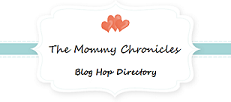by Diane Steinbach
Making Whole is a bi-monthly art therapy column focused on art to heal.
We have talked about Guerrilla art here before. Basically it is the concept of bringing art into the community in an unexpected way. Usually it involves big, bold artistic statements, but in this case, it is more about a generous sharing of handmade art and a simple message to a stranger that is a gift to the art maker and the surprised recipient.
Making art is a deeply personal expression for most of us, and because of this, the act of giving it away, to a stranger...indeed, to leave it behind is both terrifying and liberating. This art therapy process challenges the artist to consider a concept on a personal, emotional level, and then share it with a stranger. By creating something meaningful, then lovingly gifting it away, the artist can work through issues of loss in other areas of their lives.
You'll need: Small art canvases between the sizes of 4x6 to 8x10" on hard board, acrylic paints, brushes, water, Pens, high quality writing paper, dry glue sticks
Choose a word that reflects something that is important to you: Hope, Courage, Love, Peace, Faith, Joy, Friendship, Mercy, Forgiveness etc.
On the small canvas, paint an abstract expression of that word using color, line and movement. Use the entire canvas area, covering it entirely. Let it dry.
Once dry, paint the word your chose boldly somewhere on the canvas, over the painting. Allow to dry.
Pick up the paper and pen. Cut the paper down to the size of the canvas. Write the word "Found" followed by the word you chose to represent on the front of the canvas. (so, you'd have "Found Love, or Found Forgiveness, Found Courage etc.)
Look at those words. Imagine finding this, like a fortune, somewhere, like you were someone who needed it. What would you say to that person? Write it down on the paper. For example, you might write: "Found Love: You found this today because someone thought you needed a hug, you needed to be recognized as worthwhile, and valuable, You are beautiful, wonderful, and worthy of big love. This artwork is a gift to you. "
Glue the message on the back of the canvas.
Now, take your canvas out into the world. Leave it on a park bench, a seat on the bus, at a restaurant, in a mailbox, where ever someone who might need it, will find it. Walk away from your wonderful gift knowing that you have shared strength and healing greater than yourself.
image:
Making Whole is a bi-monthly art therapy column focused on art to heal.
We have talked about Guerrilla art here before. Basically it is the concept of bringing art into the community in an unexpected way. Usually it involves big, bold artistic statements, but in this case, it is more about a generous sharing of handmade art and a simple message to a stranger that is a gift to the art maker and the surprised recipient.
Making art is a deeply personal expression for most of us, and because of this, the act of giving it away, to a stranger...indeed, to leave it behind is both terrifying and liberating. This art therapy process challenges the artist to consider a concept on a personal, emotional level, and then share it with a stranger. By creating something meaningful, then lovingly gifting it away, the artist can work through issues of loss in other areas of their lives.
You'll need: Small art canvases between the sizes of 4x6 to 8x10" on hard board, acrylic paints, brushes, water, Pens, high quality writing paper, dry glue sticks
Choose a word that reflects something that is important to you: Hope, Courage, Love, Peace, Faith, Joy, Friendship, Mercy, Forgiveness etc.
On the small canvas, paint an abstract expression of that word using color, line and movement. Use the entire canvas area, covering it entirely. Let it dry.
Once dry, paint the word your chose boldly somewhere on the canvas, over the painting. Allow to dry.
Pick up the paper and pen. Cut the paper down to the size of the canvas. Write the word "Found" followed by the word you chose to represent on the front of the canvas. (so, you'd have "Found Love, or Found Forgiveness, Found Courage etc.)
Look at those words. Imagine finding this, like a fortune, somewhere, like you were someone who needed it. What would you say to that person? Write it down on the paper. For example, you might write: "Found Love: You found this today because someone thought you needed a hug, you needed to be recognized as worthwhile, and valuable, You are beautiful, wonderful, and worthy of big love. This artwork is a gift to you. "
Glue the message on the back of the canvas.
Now, take your canvas out into the world. Leave it on a park bench, a seat on the bus, at a restaurant, in a mailbox, where ever someone who might need it, will find it. Walk away from your wonderful gift knowing that you have shared strength and healing greater than yourself.
image:
- License
-


 Some rights reserved by Littlest Finch
Some rights reserved by Littlest Finch




















